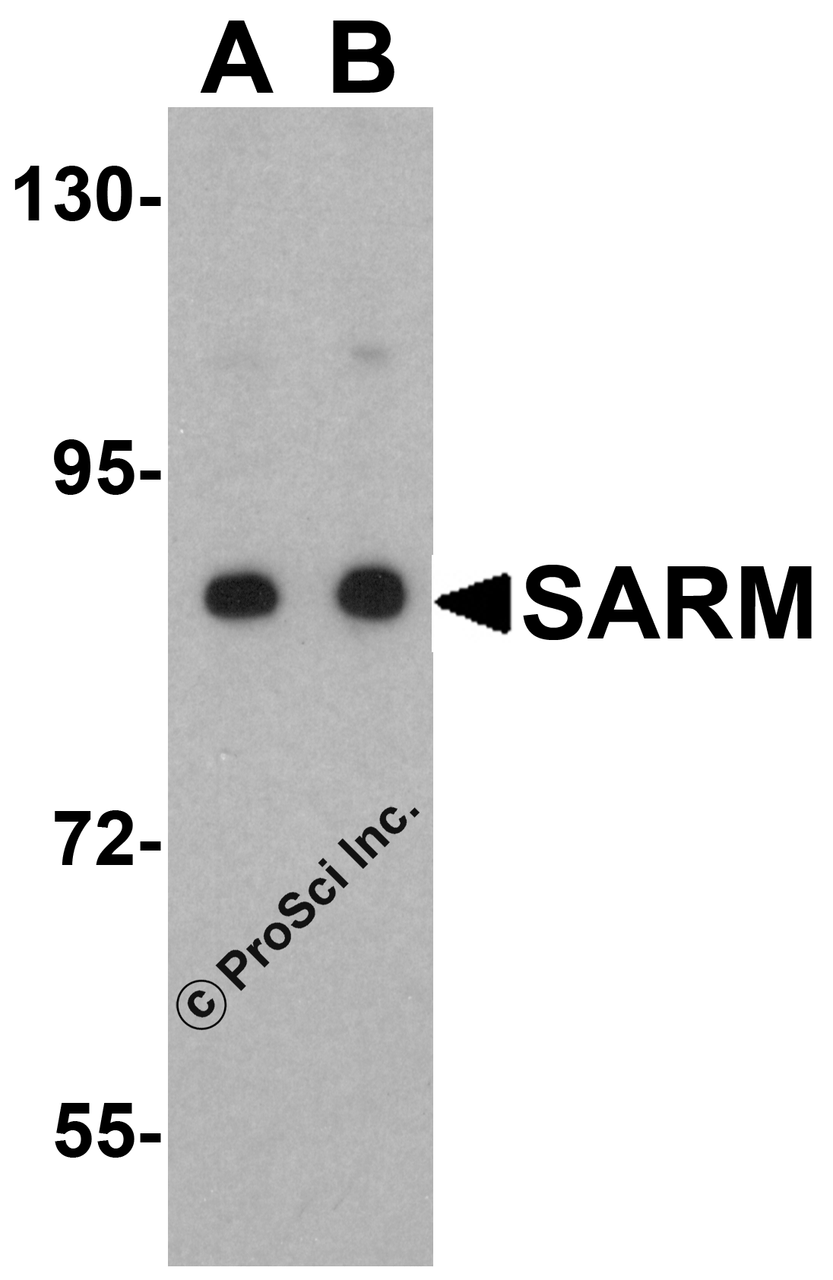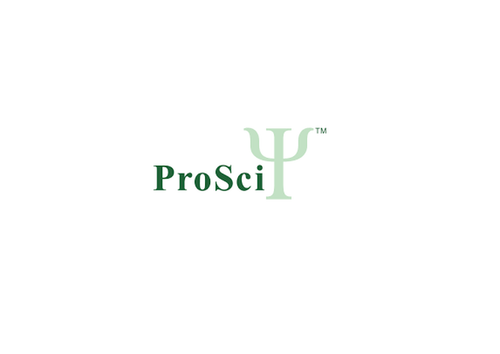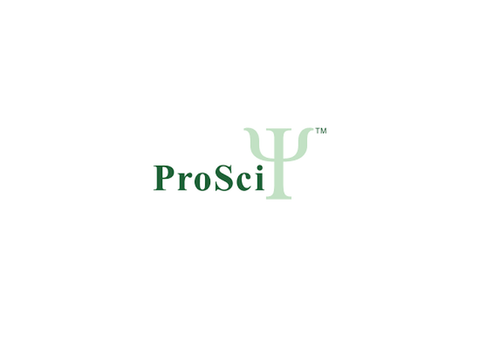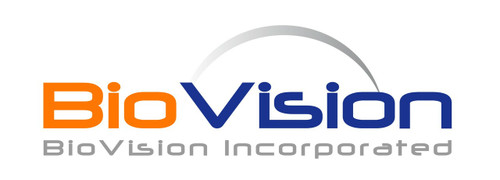Product Description
SARM Antibody | 3295 | ProSci
Host: Rabbit
Reactivity: Human, Mouse
Homology: Predicted species reactivity based on immunogen sequence: Pig: (86%)
Immunogen: SARM antibody was raised against a peptide corresponding to 14 amino acids near the C-terminus of human SARM.
The immunogen is located within amino acids 640 - 690 of SARM.
Research Area: Innate Immunity
Tested Application: E, WB, ICC, IF
Application: SARM antibody can be used for detection of SARM by Western blot at 0.5 to 1 μg/mL. Antibody can also be used for immunocytochemistry starting at 2 μg/mL. For immunofluorescence start at 2 μg/mL.
Antibody validated: Western Blot in human samples; Immunocytochemistry in human samples and Immunofluorescence in human samples. All other applications and species not yet tested.
Specificiy: N/A
Positive Control 1: Cat. No. 1224 - Daudi Cell Lysate
Positive Control 2: N/A
Positive Control 3: N/A
Positive Control 4: N/A
Positive Control 5: N/A
Positive Control 6: N/A
Molecular Weight: Predicted: 80 kDa
Observed: 85 kDa
Validation: N/A
Isoform: N/A
Purification: SARM Antibody is affinity chromatography purified via peptide column.
Clonality: Polyclonal
Clone: N/A
Isotype: IgG
Conjugate: Unconjugated
Physical State: Liquid
Buffer: SARM Antibody is supplied in PBS containing 0.02% sodium azide.
Concentration: 1 mg/mL
Storage Condition: SARM antibody can be stored at 4˚C for three months and -20˚C, stable for up to one year. As with all antibodies care should be taken to avoid repeated freeze thaw cycles. Antibodies should not be exposed to prolonged high temperatures.
Alternate Name: SARM Antibody: SARM, SAMD2, MyD88-5, KIAA0524, SARM, Sterile alpha and TIR motif-containing protein 1, Sterile alpha and Armadillo repeat protein
User Note: Optimal dilutions for each application to be determined by the researcher.
BACKGROUND: SARM Antibody: Toll-like receptors (TLRs) are signaling molecules that recognize different microbial products during infection and serve as an important link between the innate and adaptive immune responses. SARM (SAM and ARM-containing protein) , along with other molecules such as TIRP, TRIF, TIRAP, and MyD88, is thought to serve as an adaptor protein for the TLRs that allows for the activation of downstream kinases and NF-κB, and ultimately the expression of proteins involved in host defense. While SARM has not been conclusively shown to associate directly with TLRs, the presence of a Toll-interluekin-1 (TIR) domain in SARM is consistent with a role as a signaling molecule.
 Euro
Euro
 USD
USD
 British Pound
British Pound
 NULL
NULL















![SARM Antibody [Sarmy-1] | MC-368 SARM Antibody [Sarmy-1] | MC-368](https://cdn11.bigcommerce.com/s-452hpg8iuh/images/stencil/500x659/products/391134/569597/klogo__76714.1643661101__90260.1644059222.png?c=2)
![SARM Antibody [Sarmy-1] SARM Antibody [Sarmy-1]](https://cdn11.bigcommerce.com/s-452hpg8iuh/images/stencil/500x659/products/552832/760408/porsci_lo__79508.1648973713__56019.1649086079.png?c=2)